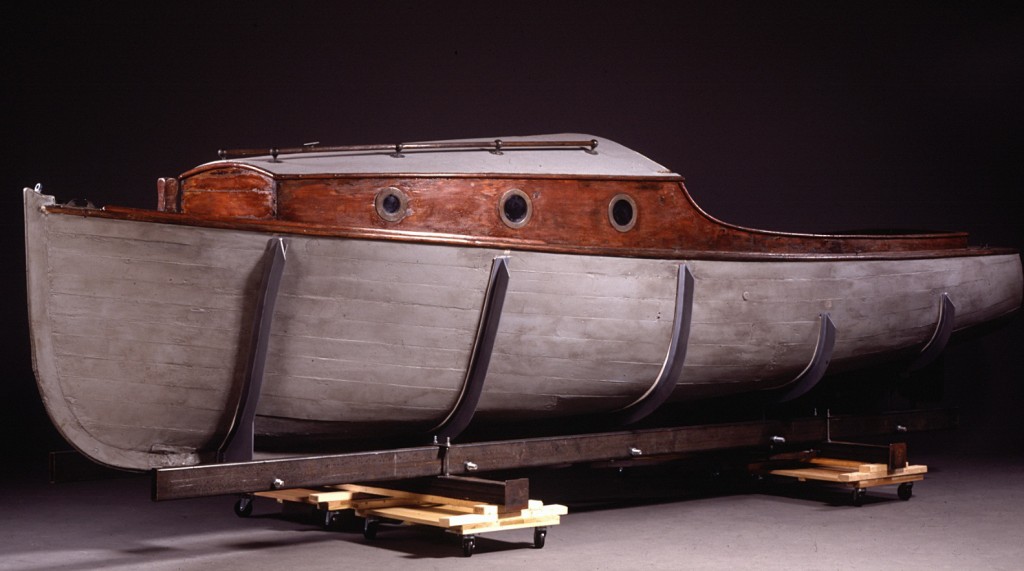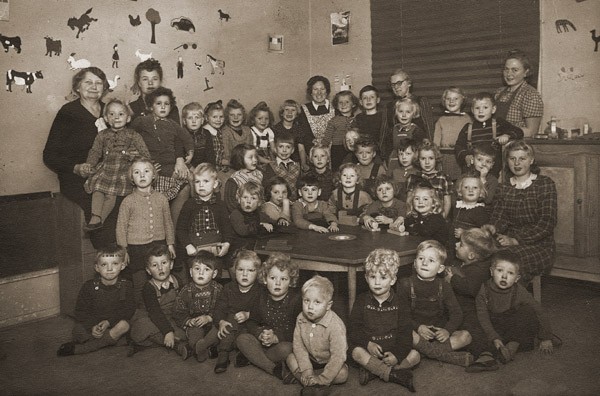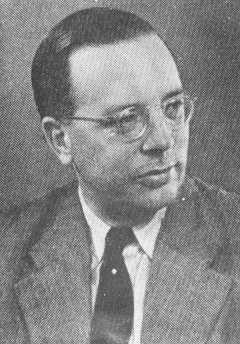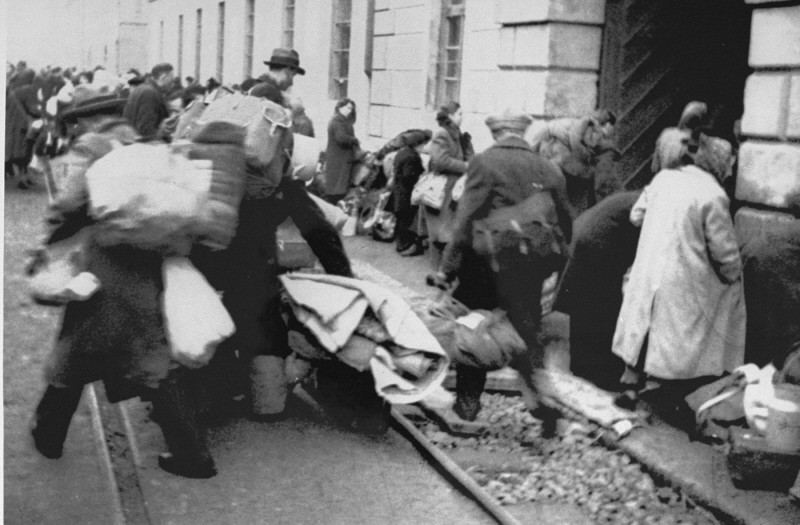
Denmark
German policies varied from country to country, including direct, brutal occupation and reliance upon collaborating regimes. Until 1943, the German occupation regime took a relatively benign approach to Denmark.
Key Facts
-
1
The Danish government did not require Jews to register their property and assets, to identify themselves, to give up apartments, homes, and businesses, or to wear the Jewish star.
-
2
As word spread of the impending deportation of Denmark’s Jews, non-Jewish Danes hid Jews and later transported them to safety in Sweden.
-
3
German authorities deported about 470 Jews to Theresienstadt.
Jewish Population of Denmark

In 1933, in a service attended by Danish King Christian X, the Jews of Copenhagen celebrated the hundredth anniversary of their synagogue's existence. Over the next seven years, Denmark would welcome approximately 4,500 German and eastern European Jewish refugees. Around 3,000 of these new arrivals were known as chalutzim, the Hebrew word for “pioneers,” who came to Denmark for agricultural training before emigration to Palestine.
When Germany occupied Denmark on April 9, 1940, the Jewish population was approximately 7,500, accounting for 0.2% of the country's total population. About 6,000 of these Jews were Danish citizens. The rest were German and eastern European refugees. Most Jews lived in the country's capital and largest city, Copenhagen.
German Occupation of Denmark
Until 1943, the German occupation regime took a relatively benign approach to Denmark. The Germans were eager to cultivate good relations with a population they perceived as "fellow Aryans." Although Germany dominated Danish foreign policy, the Germans permitted the Danish government complete autonomy in running domestic affairs, including maintaining control over the legal system and police forces.
Considering the relatively small Jewish population and the support most Danes gave to their fellow Jewish citizens, Germany initially decided not to make a major issue of the "Jewish question" in Denmark. In fact, the representative of the German Foreign Office at the Wannsee Conference recommended that the Scandinavian countries be excluded from the "Final Solution" on the assumption that the "Jewish question" could be resolved there once overall victory had been achieved. While the implementation of the Final Solution in Norway negated this recommendation, the general policy of non-interference in Denmark was decisive for the absence of such measures there.
Unlike in other western European countries, the Danish government did not require Jews to register their property and assets, to identify themselves, or to give up apartments, homes, and businesses.
In addition, Jews were not required to wear a yellow star or badge. Two attempts were made to set fire to the Copenhagen synagogue in 1941 and 1942, but local police intervened both times to prevent the arson and arrest the perpetrators. The Jewish community continued to function, including holding religious services regularly throughout the German occupation. The refusal of the Danish authorities to discriminate against the Danish Jews and King Christian's outspoken support of the Jewish community has given rise to the apocryphal story that the king himself wore a yellow star. Though untrue, the story reflects the king's opposition to persecuting Denmark's Jewish citizens and residents and the popular perception of Denmark as a country which protected the Jews.
Resistance and Rescue in Denmark
The tone of the German occupation changed in early 1943. Allied victories convinced many Danes that Germany could be defeated. While there had been minimal resistance to the Germans during the first years of the occupation, labor strikes and acts of sabotage now strained relations with Germany. The Danish government resigned on August 28, 1943, rather than yield to new German demands that German military courts try future saboteurs. The following night, the German military commander, General Hermann von Hannecken, declared martial law. German authorities arrested Danish civilians, Jews and non-Jews alike, and Danish military personnel. Under the state of emergency German authorities took direct control over the Danish military and police forces.

On September 8, 1943, SS General Werner Best, the German civilian administrator in Denmark, sent a telegram to Adolf Hitler to propose that the Germans make use of the martial law provisions to deport the Danish Jews. Hitler approved the measure nine days later. As preparations proceeded, Best, who had second thoughts about the political consequences of the deportations, informed Georg Ferdinand Duckwitz, a German naval attaché, of the impending deportation operation. Before the final order for deportation came to Copenhagen on September 28, Duckwitz, along with other German officials, warned non-Jewish Danes of the plan. In turn, these Danes alerted the local Jewish community.
In the intervening days, Danish authorities, Jewish community leaders, and countless private citizens facilitated a massive operation to get Jews into hiding or into temporary sanctuaries. When German police began the roundup on the night of October 1, 1943, they found few Jews. In general, the Danish police authorities refused to cooperate, denying German police the right to enter Jewish homes by force, or simply overlooking Jews they found in hiding. Popular protests quickly came from various quarters such as churches, the Danish royal family, and various social and economic organizations. The Danish resistance, assisted by many ordinary Danish citizens, organized a partly coordinated, partly spontaneous rescue operation.
Resistance workers and sympathizers initially helped Jews move into hiding places throughout the country and from there to the coast; fishermen then ferried them to neutral Sweden. The rescue operation expanded to include participation by the Danish police and the government. Over a period of about a month, some 7,200 Jews and 700 of their non-Jewish relatives traveled to safety in Sweden, which accepted the Danish refugees. Boat transports did not stop once the Jewish refugees were safely in Sweden: some continued to bring members of the underground resistance movement to Sweden or smuggle Swedish intelligence agents into Denmark.
Deportation to Theresienstadt

Despite the rescue efforts, the Germans seized about 470 Jews in Denmark and deported them to the Theresienstadt ghetto in occupied Czechoslovakia. Most of the deportees were German or eastern European refugees. Despite the fact that many of those deported were not Danish citizens, the Danish authorities and the Danish Red Cross vocally and insistently demanded information on their whereabouts and living conditions. The vigor of Danish protests likely deterred the Germans from transporting these Jews to killing centers in German-occupied Poland. The SS authorities at Theresienstadt even allowed Danish prisoners to receive letters and some care packages. The Danish Red Cross was a key driving force behind the request of the International Red Cross to visit and inspect Theresienstadt, first made in the autumn of 1943. After the Reich Security Main Office (Reichssicherheitshauptamt; RSHA) authorized the visit, a Danish Red Cross representative accompanied International Red Cross officials during their visit in June 1944.
Danish Jews remained in Theresienstadt, where dozens of them died, until 1945. In late April of that year, German authorities handed the Danish prisoners over to the custody of the Swedish Red Cross. Virtually all of the refugees returned to Denmark in 1945. Although a housing shortage required some of them to live in shelters for a few months, most found their homes and businesses as they had left them, since the local authorities had refused to permit the Germans or their collaborators in Denmark to seize or plunder Jewish homes.
In total, some 120 Danish Jews died during the Holocaust, either in Theresienstadt or during the flight from Denmark. This relatively small number represents one of the highest Jewish survival rates for any German-occupied European country.
Critical Thinking Questions
Investigate how German occupation policies and regulations for Denmark were different from other countries. How did this affect chances of rescue in Denmark and other nations?
Learn about choices Danish citizens made to assist their Jewish compatriots.
What pressures and motivations affect citizens’ choices when faced with the persecution of and threat to minorities in their country today?

